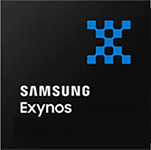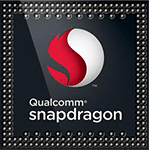Qualcomm Snapdragon 7 Gen 3 Benchmark, Test and specs
Last updated:
The Qualcomm Snapdragon 7 Gen 3 has 8 cores with 8 threads and is based on the 3. gen of the Qualcomm Snapdragon series. The processor was released in Q4/2023.

| Name: | Qualcomm Snapdragon 7 Gen 3 |
|---|---|
| Family: | Qualcomm Snapdragon (102) |
| CPU group: | Qualcomm Snapdragon 7 Gen 3 (1) |
| Architecture: | Kryo Prime, Gold, Silver |
| Segment: | Mobile |
| Generation: | 3 |
| Predecessor: | -- |
| Successor: | -- |
CPU Cores and Base Frequency
The Qualcomm Snapdragon 7 Gen 3 has 8 CPU cores and can calculate 8 threads in parallel. The clock frequency of the Qualcomm Snapdragon 7 Gen 3 is 2.63 GHz. The number of CPU cores greatly affects the speed of the processor and is an important performance indicator.
| CPU Cores / Threads: | 8 / 8 |
|---|---|
| Core architecture: | hybrid (Prime / big.LITTLE) |
| A-Core: | 1x Cortex-A715 |
| B-Core: | 3x Cortex-A715 |
| C-Core: | 4x Cortex-A510 |
| Hyperthreading / SMT: | No |
|---|---|
| Overclocking: | No |
| A-Core Frequency: | 2.63 GHz |
| B-Core Frequency: | 2.40 GHz |
| C-Core Frequency: | 1.80 GHz |
Artificial Intelligence and Machine Learning
Processors with the support of artificial intelligence (AI) and machine learning (ML) can process many calculations, especially audio, image and video processing, much faster than classic processors. Algorithms for ML improve their performance the more data they have collected via software. ML tasks can be processed up to 10,000 times faster than with a classic processor.
| AI hardware: | Qualcomm AI engine |
|---|---|
| AI specifications: | Hexagon |
Internal Graphics
The Qualcomm Snapdragon 7 Gen 3 has integrated graphics, called iGPU for short. Specifically, the Qualcomm Snapdragon 7 Gen 3 uses the Qualcomm Adreno 720, which has -- texture shaders and -- execution units. The iGPU uses the system's main memory as graphics memory and sits on the processor's die.
| GPU name: | Qualcomm Adreno 720 |
|---|---|
| GPU frequency: | 0.44 GHz |
| GPU (Turbo): | 0.44 GHz |
| Compute units: | -- |
| Shader: | -- |
| Hardware Raytracing: | No |
| Release date: | Q4/2023 |
| Max. displays: | 0 |
|---|---|
| Generation: | -- |
| Direct X: | 12.1 |
| Technology: | 4 nm |
| Max. GPU Memory: | -- |
| Frame Generation: | No |
Hardware codec support
A photo or video codec that is accelerated in hardware can greatly accelerate the working speed of a processor and extend the battery life of notebooks or smartphones when playing videos.
| h265 / HEVC (8 bit): | Decode / Encode |
|---|---|
| h265 / HEVC (10 bit): | Decode / Encode |
| h264: | Decode / Encode |
| VP8: | Decode / Encode |
| VP9: | Decode / Encode |
| AV1: | No |
|---|---|
| AVC: | Decode |
| VC-1: | Decode |
| JPEG: | Decode / Encode |
Memory & PCIeThe processor can use up to memory in 2 (Dual Channel) memory channels. The maximum memory bandwidth is 51.2 GB/s. The memory type as well as the amount of memory can greatly affect the speed of the system. |
|
| Memory type: | Memory bandwidth: |
|---|---|
| LPDDR4X-4266 LPDDR5-6400 | 17.1 GB/s 51.2 GB/s |
| Max. Memory: | |
| Memory channels: | 2 (Dual Channel) |
| ECC: | No |
| PCIe: | |
| PCIe Bandwidth: | -- |
Thermal ManagementThe thermal design power (TDP for short) of the processor is . The TDP specifies the necessary cooling solution that is required to cool the processor sufficiently. The TDP usually gives a rough idea of the actual power consumption of the CPU. |
|
|---|---|
| TDP (PL1 / PBP): | |
| TDP (PL2): | -- |
| TDP up: | -- |
| TDP down: | -- |
| Tjunction max.: | -- |
Technical details
The Qualcomm Snapdragon 7 Gen 3 is made in 4 nm. The smaller the manufacturing process of a CPU, the more modern and energy-efficient it is. Overall, the processor has 0.00 MB cache. A large cache can greatly speed up the processor's speed in some cases such as games.
| Technology: | 4 nm |
|---|---|
| Chip design: | Chiplet |
| Socket: | -- |
| L2-Cache: | -- |
| L3-Cache: | -- |
| AES-NI: | No |
| Operating systems: | Android, Windows 10/11 (ARM) |
| Virtualization: | None |
|---|---|
| Instruction set (ISA): | Armv9-A (64 bit) |
| ISA extensions: | -- |
| Release date: | Q4/2023 |
| Release price: | -- |
| Part Number: | SM7550-AB |
| Documents: | Technical data sheet |
Rate this processor
Benchmark results

The benchmark results for the Qualcomm Snapdragon 7 Gen 3 have been carefully checked by us. We only publish benchmark results that have been created by us or that have been submitted by a visitor and then checked by a team member. All results are based on and fullfill our benchmark guidelines.
AnTuTu 10 Benchmark
The AnTuTu 10 benchmark is one of the best-known benchmarks for mobile processors, which is now available in version 10. There is a version for Android-based smartphones and tablets, as well as a version for Apple mobile devices, i.e. iPhones and iPads.
The Antutu 10 benchmark has 3 phases. In the first phase, the device's RAM is tested, in phase 2 the graphics are tested and in the final phase the entire device is pushed to its performance limits by rendering 3D graphics.
Antutu 10 is therefore ideal for comparing the performance of different devices.
The Antutu 10 benchmark has 3 phases. In the first phase, the device's RAM is tested, in phase 2 the graphics are tested and in the final phase the entire device is pushed to its performance limits by rendering 3D graphics.
Antutu 10 is therefore ideal for comparing the performance of different devices.
|
|
Apple A16 Bionic
6C 6T @ 3.46 GHz |
||
|
|
Samsung Exynos 2200
8C 8T @ 2.80 GHz |
||
|
|
Google Tensor G3
8C 8T @ 2.91 GHz |
||
|
|
Qualcomm Snapdragon 7 Gen 3
8C 8T @ 2.63 GHz |
||
|
|
Samsung Exynos 1480
8C 8T @ 2.75 GHz |
||
|
|
Qualcomm QCM6490
8C 8T @ 2.71 GHz |
||
|
|
Samsung Exynos 1380
8C 8T @ 2.40 GHz |
||
Benchmarks
Popular comparisons
back to index






